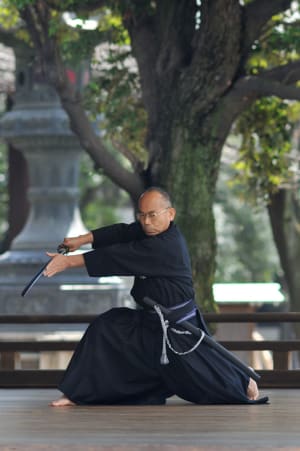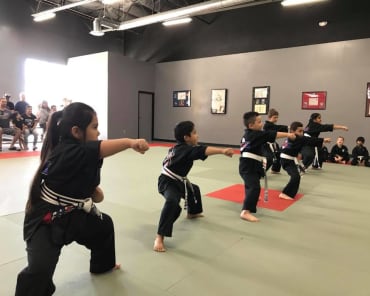
Japanes sword etiquette.
All martial arts have many traditions and etiquette.
The Japanese styles are particularly known for it. From traditional ways to dress to how to bow before entering the training area to how to address your teachers. There has always been a air of complex simplicity about it.
One of the things that has many unique etiquettes and traditions is dealing the Japanese sword or “Katana.”
If you have ever been to a Japanese restaurant or a Japanese festival you have undoubtedly seen Katana on display. However, even most modern Japanese don’t know the “Why” of displaying the sword(s). Just like many Americans couldn’t tell you why “Old Glory” is to be displayed in a certain way.
So let’s go through the important points.
When displaying a Katana, weather it is on a stand or being worn by a sword student (Iaido ka) the sharp edge is always facing up! Never down. The swords has been sharpened to a deathly edge and allowing the sword to “ride on the edge” facing downward with dull the blade.
When displaying on a shelf or display stand, the direction of the handle or “tsuka” has significant meaning. If displayed on the left , is a symbol of peace as the sword is not ready for attack. There was no left hand for the Samurai as all were made to draw with the right hand for many reasons, some utilitarian and some superstitious.
If the Tsuka/handle is displayed on the right, it is a symbol of readiness. When you see swords displayed in a public setting such as a restaurant... the swords should be displayed to the left and the blade edge facing up.
If you display them at home, the way you display your swords could be dictated by the level of comfort you have with your guests or the state of readiness that you with to have your weapons in. Swords displayed on the right signify that you’re ready to draw them and turn in cut with a single motion, as all samurai were as stated before, taught to be right handed.
When wearing the sword, many of the same traditions are also followed. The blade edge is always facing upwards when held in the summarize belt or “Obi”. The sword is always worn on the left side of the body. This way you can reach with the right and fully draw across the body with one single stroke as the left hand pulls the scabbard or “Saya” back and out of the way.
A few things that most people do not realize about the sword etiquette. Japan to this day still follows many of the same traditions in their every day life. They drive on the left side of the road. Why? Imagine to samurai with their swords on the left side. They are now walking down a narrow hallway in a castle. They come towards each other and are walking to the right. Should they need to draw their sword, the wall to the right would impede their draw across the body. If they were walking on the left side they would be able to make a full cut across towards their enemy. They have also this etiquette to this day when driving or passing one another. You pass people going in opposite directions while walking to the left. Just as you drive on the left side of the road. In more modern times, Japan also took their driving from the British. As Britain helped Japan after the Meiji restoration to develop their railway and automobile system. The British way of driving to the left fit very well in with the Japanese samurai ideals.





